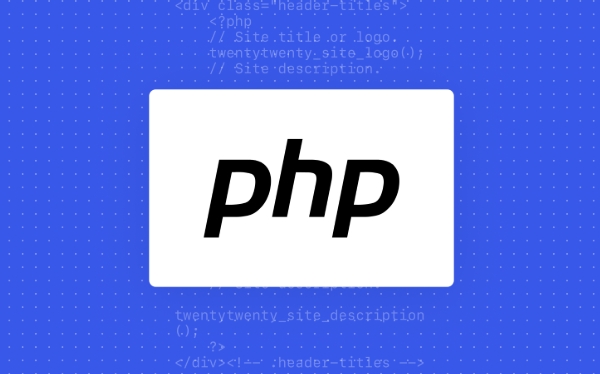Performing DELETE operations using PHP's preprocessing statements prevents SQL injection and ensures that deletion is safe and controllable. 1. Establish a reliable database connection. It is recommended to use MySQLi or PDO; 2. Use placeholders (?) to write DELETE preprocessing statements and bind parameters through bind_param to ensure type matching; 3. Call execute() to perform deletion operations; 4. Optionally check affected_rows to confirm whether the deletion takes effect; 5. Pay attention to calling execute() multiple times during batch deletion, and explicitly close the statement to standardize the operation process.

It is actually quite straightforward to use PHP preprocessing statements to execute DELETE operations, just figure out the process and parameter binding methods. The key is to prevent SQL injection while ensuring that the deletion operation is controllable and safe.

Get ready for database connection
Before performing DELETE, you must establish a reliable database connection. PDO or MySQLi is recommended, both of which support preprocessing statements. Here, take MySQLi as an example:
$mysqli = new mysqli("localhost", "username", "password", "database");
if ($mysqli->connect_error) {
die("Connection failed: " . $mysqli->connect_error);
}After the connection is successful, you can prepare your DELETE query.

Write DELETE preprocessing statements
The DELETE statement usually deletes data based on a certain condition, such as deleting a record with an ID. At this time, parameter binding is needed to avoid splicing SQL strings directly.
The basic structure is as follows:

$stmt = $mysqli->prepare("DELETE FROM users WHERE id = ?");
$stmt->bind_param("i", $id);
$id = 1;
$stmt->execute();-
?is a placeholder, indicating the variable to be passed in -
bind_param("i", $id)means binding an integer parameter, "i" means integer type -
$stmt->execute()is the actual deletion operation
This can effectively prevent SQL injection attacks.
Optional: Confirm whether the deletion is successful
Sometimes you may wonder if this deletion takes effect. You can judge by checking the number of rows that affect:
if ($stmt->affected_rows > 0) {
echo "Delete successfully";
} else {
echo "No matching record was found";
}This judgment is very helpful for debugging or user prompts. For example, when the user enters an ID that does not exist, a friendly prompt can be returned instead of a silent failure.
Notes and FAQs
Type matching : The first parameter of bind_param is the type identifier. Commonly used are i (integer), s (string), and d (floating point number). Be sure to ensure that it is consistent with the field type.
Multiple executions : If you need to delete different IDs in batches, you can call execute() multiple times after bind_param:
$ids = [1, 2, 3]; foreach ($ids as $id) { $stmt->bind_param("i", $id); $stmt->execute(); }Close statement : It is best to call
$stmt->close();after execution. Although the script will be automatically released after the script is finished, it is more standard to explicitly close it.
Basically that's it. DELETE preprocessing statements are not complicated, but the details are prone to errors, especially parameter binding and type parts. As long as you follow the steps, there will generally be no problem.
The above is the detailed content of PHP prepared statement for DELETE query. For more information, please follow other related articles on the PHP Chinese website!

Hot AI Tools

Undress AI Tool
Undress images for free

Undresser.AI Undress
AI-powered app for creating realistic nude photos

AI Clothes Remover
Online AI tool for removing clothes from photos.

Clothoff.io
AI clothes remover

Video Face Swap
Swap faces in any video effortlessly with our completely free AI face swap tool!

Hot Article

Hot Tools

Notepad++7.3.1
Easy-to-use and free code editor

SublimeText3 Chinese version
Chinese version, very easy to use

Zend Studio 13.0.1
Powerful PHP integrated development environment

Dreamweaver CS6
Visual web development tools

SublimeText3 Mac version
God-level code editing software (SublimeText3)

Hot Topics
 How do I stay up-to-date with the latest PHP developments and best practices?
Jun 23, 2025 am 12:56 AM
How do I stay up-to-date with the latest PHP developments and best practices?
Jun 23, 2025 am 12:56 AM
TostaycurrentwithPHPdevelopmentsandbestpractices,followkeynewssourceslikePHP.netandPHPWeekly,engagewithcommunitiesonforumsandconferences,keeptoolingupdatedandgraduallyadoptnewfeatures,andreadorcontributetoopensourceprojects.First,followreliablesource
 What is PHP, and why is it used for web development?
Jun 23, 2025 am 12:55 AM
What is PHP, and why is it used for web development?
Jun 23, 2025 am 12:55 AM
PHPbecamepopularforwebdevelopmentduetoitseaseoflearning,seamlessintegrationwithHTML,widespreadhostingsupport,andalargeecosystemincludingframeworkslikeLaravelandCMSplatformslikeWordPress.Itexcelsinhandlingformsubmissions,managingusersessions,interacti
 How to set PHP time zone?
Jun 25, 2025 am 01:00 AM
How to set PHP time zone?
Jun 25, 2025 am 01:00 AM
TosettherighttimezoneinPHP,usedate_default_timezone_set()functionatthestartofyourscriptwithavalididentifiersuchas'America/New_York'.1.Usedate_default_timezone_set()beforeanydate/timefunctions.2.Alternatively,configurethephp.inifilebysettingdate.timez
 How do I validate user input in PHP to ensure it meets certain criteria?
Jun 22, 2025 am 01:00 AM
How do I validate user input in PHP to ensure it meets certain criteria?
Jun 22, 2025 am 01:00 AM
TovalidateuserinputinPHP,usebuilt-invalidationfunctionslikefilter_var()andfilter_input(),applyregularexpressionsforcustomformatssuchasusernamesorphonenumbers,checkdatatypesfornumericvalueslikeageorprice,setlengthlimitsandtrimwhitespacetopreventlayout
 What is data serialization in PHP (serialize(), unserialize())?
Jun 22, 2025 am 01:03 AM
What is data serialization in PHP (serialize(), unserialize())?
Jun 22, 2025 am 01:03 AM
ThePhpfunctionSerialize () andunserialize () AreusedtoconvertcomplexdaTastructdestoresintostoraSandaBackagain.1.Serialize () c OnvertsdatalikecarraysorobjectsraystringcontainingTypeandstructureinformation.2.unserialize () Reconstruct theoriginalatataprom
 How do I embed PHP code in an HTML file?
Jun 22, 2025 am 01:00 AM
How do I embed PHP code in an HTML file?
Jun 22, 2025 am 01:00 AM
You can embed PHP code into HTML files, but make sure that the file has an extension of .php so that the server can parse it correctly. Use standard tags to wrap PHP code, insert dynamic content anywhere in HTML. In addition, you can switch PHP and HTML multiple times in the same file to realize dynamic functions such as conditional rendering. Be sure to pay attention to the server configuration and syntax correctness to avoid problems caused by short labels, quotation mark errors or omitted end labels.
 What are the best practices for writing clean and maintainable PHP code?
Jun 24, 2025 am 12:53 AM
What are the best practices for writing clean and maintainable PHP code?
Jun 24, 2025 am 12:53 AM
The key to writing clean and easy-to-maintain PHP code lies in clear naming, following standards, reasonable structure, making good use of comments and testability. 1. Use clear variables, functions and class names, such as $userData and calculateTotalPrice(); 2. Follow the PSR-12 standard unified code style; 3. Split the code structure according to responsibilities, and organize it using MVC or Laravel-style catalogs; 4. Avoid noodles-style code and split the logic into small functions with a single responsibility; 5. Add comments at key points and write interface documents to clarify parameters, return values ??and exceptions; 6. Improve testability, adopt dependency injection, reduce global state and static methods. These practices improve code quality, collaboration efficiency and post-maintenance ease.
 How do I execute SQL queries using PHP?
Jun 24, 2025 am 12:54 AM
How do I execute SQL queries using PHP?
Jun 24, 2025 am 12:54 AM
Yes,youcanrunSQLqueriesusingPHP,andtheprocessinvolveschoosingadatabaseextension,connectingtothedatabase,executingqueriessafely,andclosingconnectionswhendone.Todothis,firstchoosebetweenMySQLiorPDO,withPDObeingmoreflexibleduetosupportingmultipledatabas






